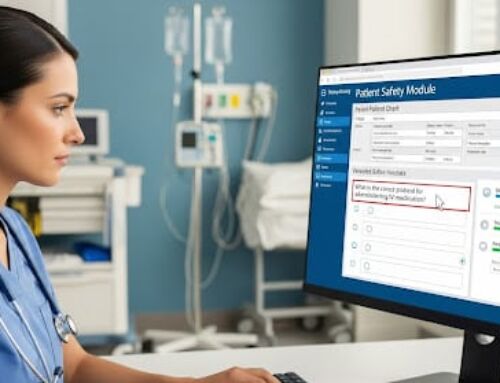
Securing customer data has become paramount for organizations in today’s digital world. With increasing cybersecurity threats and regulatory requirements, businesses need to demonstrate their commitment to protecting sensitive information. One way to accomplish this is by achieving SOC 2 readiness.
SOC 2, or System and Organization Controls 2, is a widely recognized auditing standard that evaluates an organization’s controls related to:
- Security
- Availability
- Processing
- Integrity
- Confidentiality
- Privacy
Let’s explore the essential guidelines and principles that are behind SOC 2 readiness.
Understanding SOC 2 Guidelines: Adherence to the Rules
To achieve SOC 2 readiness, organizations must adhere to specific SOC 2 guidelines set forth by the American Institute of Certified Public Accountants (AICPA). These guidelines outline the criteria that an organization needs to meet to be considered secure and reliable when it comes to handling customer data. The SOC 2 framework consists of five SOC 2 trust principles.
1. Security
The security SOC 2 principle assesses whether an organization has implemented suitable measures to protect its systems from unauthorized access or breaches.
It includes policies and procedures related to:
- System Monitoring
- User Access Management
- Incident Response Plans
- Encryption Methods
- Physical Safeguards
2. Availability
Availability refers to the accessibility of a system or service as agreed upon with customers or users. This SOC 2 principle ensures that organizations have appropriate redundancy measures in place to minimize downtime due to unexpected events such as power outages or hardware failures. It also involves disaster recovery planning and ensuring regular backups are performed.
3. Processing Integrity
Processing integrity focuses on verifying that all data processing activities are accurate, complete, timely, and authorized by valid users.
Organizations need robust controls in place to ensure data is processed correctly through various stages, such as:
- Input Validation Controls
- Data Transformation Controls
- Output Reporting Controls
4. Confidentiality
Confidentiality requires organizations to protect sensitive information from unauthorized use or disclosure.
This SOC 2 principle encompasses the:
- Safeguarding Customer Data with Access Controls
- Encryption Methods
- Secure Transmission Protocols
- Employee Training on Handling Confidential Data
5. Privacy
The privacy SOC 2 principle assesses whether an organization has implemented appropriate measures to comply with applicable privacy laws and regulations.
It involves:
- Obtaining Consent for Collecting Personal Information
- Providing Clear Privacy Notices
- Limited Use of Collected Data
- Establishing Procedures for Complaints & Inquiries Related to Privacy Concerns
Preparing for SOC 2 Readiness: What You Need to Know
Achieving SOC 2 readiness is a comprehensive process that requires careful planning and implementation of robust controls.
Here are some steps organizations can take to prepare for SOC 2 compliance.
1. Define Scope
Determine which systems or services will be included in the SOC 2 assessment scope. This may involve identifying critical applications, networks, data centers, or third-party service providers that handle customer data.
2. Conduct Risk Assessment
Perform a thorough risk assessment to identify potential vulnerabilities and risks associated with the systems within the assessment scope. This will help prioritize control implementation efforts based on their impact on SOC 2 trust principles.
3. Develop Policies & Procedures
Create comprehensive policies and procedures that address each SOC 2 principle outlined in the framework.
These documents should clearly define:
- Roles & Responsibilities
- Security Incident Response Plans
- Backup and Recovery Procedures
- Access Controls
- Encryption Standards
4. Implement Controls
Implement technical and operational controls necessary to meet the identified SOC 2 trust principles.
This may involve deploying:
- Firewalls
- Intrusion Detection Systems (IDS)
- Access Management Tools
- Encryption Technologies
- Monitoring Solutions
- Employee Awareness Programs
5. Perform Regular Assessments
Conduct regular internal assessments to ensure ongoing compliance with SOC 2 guidelines. These assessments can help identify gaps or areas for improvement before engaging external auditors for formal SOC 2 readiness assessments.
Benefits of SOC 2 Readiness: Enhancing Your Organization
1. Enhanced Security Posture
By undergoing SOC 2 readiness assessments, organizations can identify and address potential vulnerabilities in their systems proactively. This helps strengthen their overall security posture by implementing robust controls based on industry best practices.
2. Competitive Advantage
Demonstrating SOC 2 readiness can give your organization a competitive edge by assuring customers that you take their data privacy seriously. It shows your commitment to safeguarding their sensitive information and sets you apart from competitors who may not have undergone such assessments.
3. Increased Customer Trust
In today’s data-driven world, trust is paramount. Achieving SOC 2 readiness and obtaining the associated certification provides customers with confidence that their data is in safe hands. This can increase customer loyalty and satisfaction, benefiting your organization’s reputation.
4. Regulatory Compliance
Many industries have stringent regulatory requirements for data protection. By achieving SOC 2 readiness, organizations can demonstrate compliance with these regulations, reducing the risk of penalties or legal consequences.
5. Improved Incident Response
SOC 2 readiness assessments often involve testing an organization’s incident response procedures. This helps identify gaps in detecting, responding to, and recovering from security incidents. By addressing these gaps, organizations can improve their ability to mitigate potential breaches effectively.
Achieving SOC 2 Readiness
Achieving SOC 2 readiness is a significant milestone for organizations aiming to demonstrate their commitment to safeguarding customer data. By following the guidelines and principles outlined in the SOC 2 framework, businesses can enhance their security posture and build customer trust. Remember, achieving SOC 2 readiness is an ongoing process that requires continuous monitoring, assessment, and improvement of controls. Take proactive steps now to ensure your organization meets the stringent requirements of SOC 2 and stays ahead in today’s ever-evolving cybersecurity landscape.










